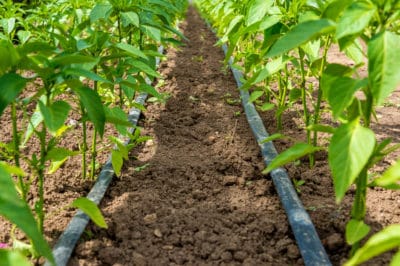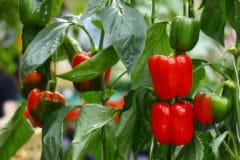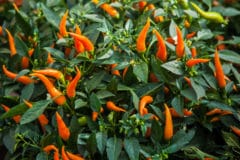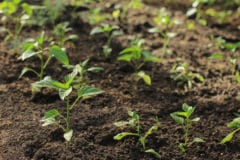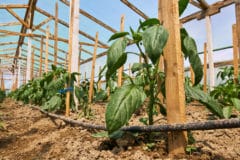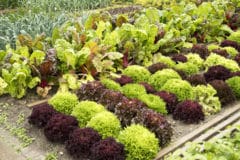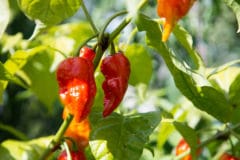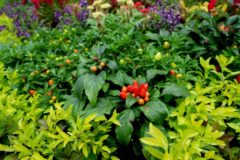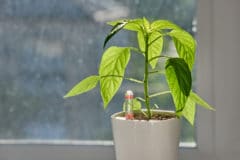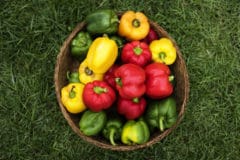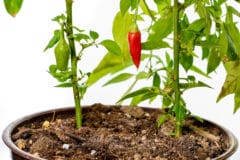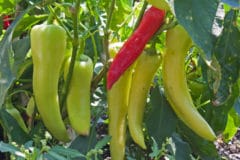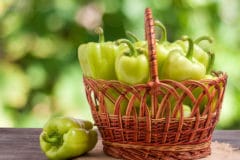Traditional Production Plant Spacing
Commercially, pepper plants are spaced 12-18 inches apart. This allows for minimum competition, plenty of airflow, and easy access for weeding and harvesting. If planting in rows, space the rows 24-36 inches apart. Row planting makes tasks like weeding and mulching easy particularly when growing for market.
Many pepper plants spaced this far apart will require a support cage or trellis. It planted closer together they can support each other without reducing production too much. When wanting a fuller look with ornamental peppers like firecrackers, for instance, space them closer together. For ornamental and landscaping, plant 7-14 inches apart.
Container and Hydroponic Gardening
When growing peppers in containers they can be slightly closer together. 12-inch plant spacing is suitable. Plants do best when at least 6-inches from the container rim.
Hydroponic systems allow plants to grow tightly packed together. All the nutrients are delivered through the water provided, so no plant is competing with any other. Peppers grown in hydroponic systems are spaced as close as 6-8 inches. Each plant has an individual growing compartment.
Companion Planting
Companion planting saves space and encourages healthy diversity. One aspect of good companion planting is integrating plants that will not compete for soil space or nutrients. For this reason, they can be planted between peppers spaced 18 inches apart.
Herbs and flowers are the best pepper companions because they not only ward off insects and disease, but many of them have growth habits that do not compete with peppers. Here are a few of the best:
- Basil
- Dill
- Coriander
- Marjoram
- Parsley
- Thyme
- Marigold
Ground cover plants, roots vegetables, and low bushy flowers will not block sunlight from reaching pepper plants. Short season crops can be grown successionally between pepper plantings. Things like onions, leaf lettuce, radishes, and bush beans.
Separate Varieties
There are so many types of pepper out there it’s likely you are growing more than one variety. In order to save the seeds from your homegrown pepper plants, they can’t cross-pollinate between varieties. For this reason, each variety of pepper should be isolated.
Plants them in separate beds with rows of other vegetables, herbs, or flowers between them. This will discourage bees from transferring pollen from one variety to another creating a genetic combination that will not be true-to-type the following season.
